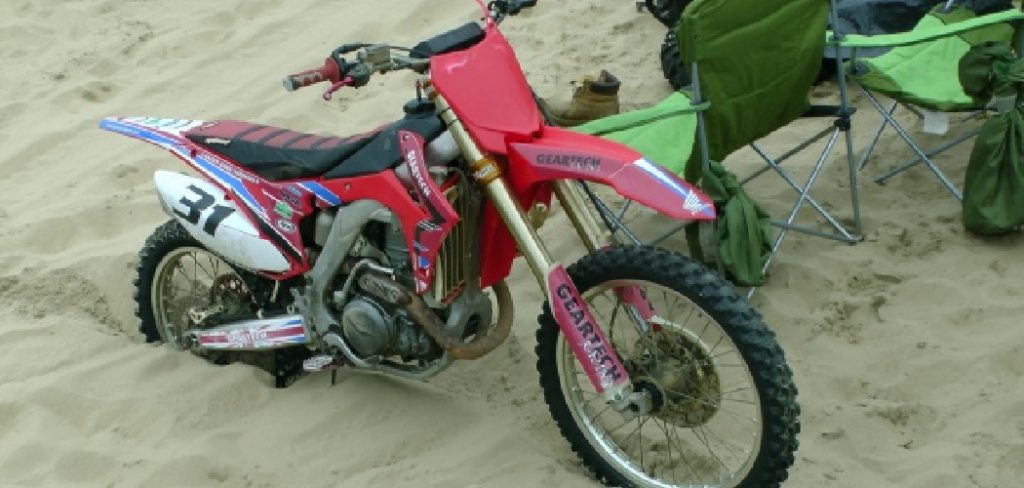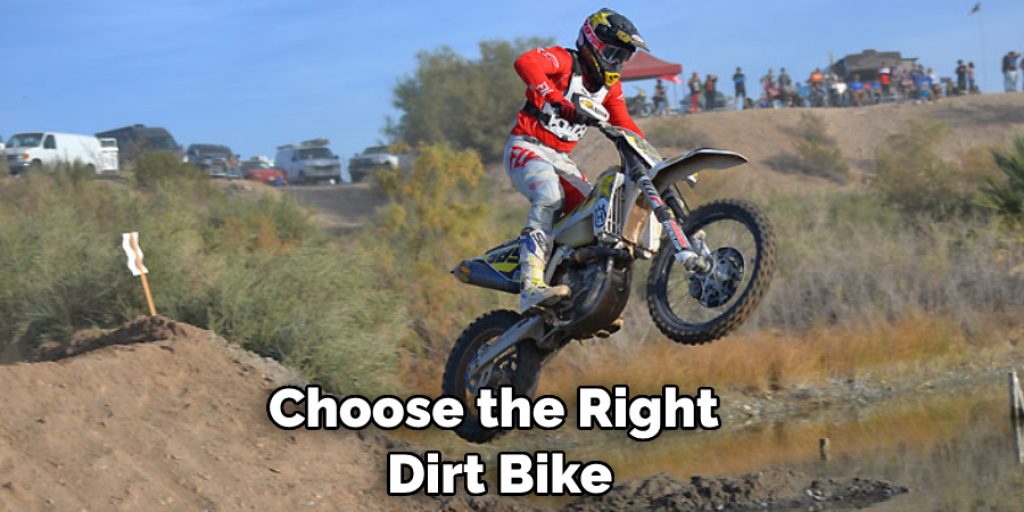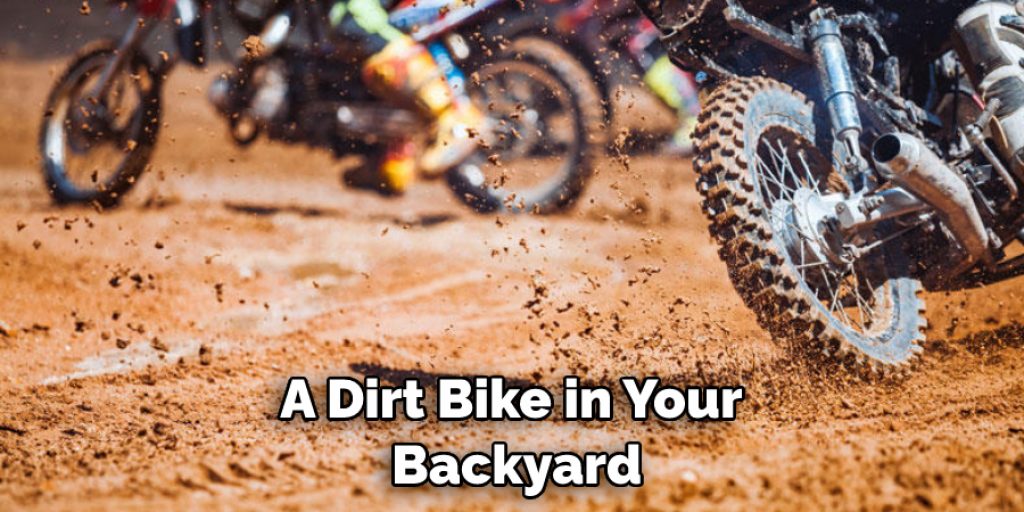Can I Ride My Dirt Bike in My Backyard
Can I ride my dirt bike in my backyard? Maybe – it depends on a few things. You’ll need enough space to maneuver your bike safely, and you’ll need to be mindful of any obstacles or hazards in your yard that could cause you to crash. On the other hand, if you can safely ride in your backyard, it’s a great way to practice and improve your skills. Ensure you follow all applicable laws and wear the appropriate safety gear. This article will cover how to ride safely in your backyard and what to consider before you rev up your engine. Keep reading to learn more.

What Causes Backyard Riding Hazards?
There are a few hazards that are specific to backyard riding. First, you must be aware of obstacles like sheds, trees, and clotheslines. You could seriously injure yourself if you hit one of these while ridings. Creating a safe riding area is important by clearing away any obstacles before you start riding.
You also need to be aware of the terrain in your backyard. Riding in your backyard could be dangerous if it’s hilly or has a lot of bumps and holes. Be sure to inspect the area carefully and make any necessary repairs before you start riding.
Another hazard to consider is the possibility of being seen by your neighbors. If you live in a neighborhood with close houses, riding in your backyard could disturb the peace and cause complaints from your neighbors. Be considerate of their space and try to ride during quiet times, like early in the morning or late at night.
Is It Legal to Ride a Dirt Bike in Your Backyard?
Laws regarding dirt bike riding vary from state to state, so it’s important to check the laws in your area before you start riding in your backyard. In some states, riding a dirt bike on your own property is perfectly legal. However, other states have more restrictive laws that might prohibit backyard riding. So, before you start riding in your backyard, familiarize yourself with the laws in your state. You can usually find this information online or by contacting your local police department.
What Are the Benefits of Backyard Riding?
Riding in your backyard offers a few unique benefits. First, it’s a great way to practice and improve your skills. If you have a safe area to ride, you can work on perfecting your technique without the worry of traffic or other riders. Backyard riding can also be a great way to stay in shape. Finally, dirt bike riding is an excellent way to get your heart pumping if you’re looking for a workout. Just be sure to warm up properly before you start riding and take breaks as needed to avoid exhaustion.

Another benefit of backyard riding is that it’s usually free. If you have your own dirt bike, you don’t have to worry about paying for a membership or rental fees. You can ride as often as you like, making it a great activity for budget-minded riders. Finally, backyard riding is a great way to bond with your family and friends. If you have young riders in your life, it can be a fun and exciting way to spend time together. Just be sure to supervise them closely and never ride beyond your skill level.
You Can Check It Out Can You Ride an Electric Dirt Bike on the Sidewalk
Some effective Ways How to Ride Safely in Your Backyard:
1. Choose the Right Dirt Bike.
If you’re new to dirt biking, choosing a bike that matches your skill level is important. Don’t buy a bike that’s too powerful or too large for you. It would be best if you also avoided used bikes, as they might not be in good condition and could be more dangerous to ride.
2. Get Familiar With the Terrain.
Before you start riding, take a walk around your property to familiarize yourself with the terrain. Look for obstacles like trees, bushes, and rocks that could cause you to crash. Also, pay attention to the ground, as uneven surfaces can be dangerous to ride on. If you have any concerns, make sure to fix them before you start riding. Finally, try to avoid riding in wet or muddy conditions, as this can make the terrain more slippery and dangerous.
3. Clear Away Any Obstacles.
Once you’ve inspected the terrain, clear away any obstacles that could cause you to crash. To do this, you’ll need to use a rake or shovel to remove debris from the riding area. First, remove any large objects like rocks or sticks. Then, rake up any small objects, like leaves or twigs. Be sure to dispose of the debris properly, so it doesn’t end up back in the riding area. If you have any concerns about the safety of the riding area, it’s best to avoid riding until you’ve fixed the problem.

4. Inspect Your Bike.
Before you start riding, inspect your bike to make sure everything is in working order. For example, check the tires to see if they’re properly inflated. Also, check the brakes to ensure they’re working properly. If you have any concerns about the condition of your bike, it’s best to take it to a mechanic before riding.
5. Warm Up Properly.
Just like any other physical activity, it’s important to warm up before you start riding. A good warm-up will help get your heart rate up and prepare your muscles for riding. To warm up, start by riding slowly for a few minutes. Then, pick up the pace and ride for a few more minutes. Be sure to listen to your body and take breaks as needed.
6. Wear the Right Gear.
Wearing the proper gear is essential for safety. You should always wear a helmet and eye protection when you’re riding. You should also wear long pants and a long-sleeved shirt to protect your skin from the elements. If you’re riding in cold weather, you might want to consider wearing gloves and a jacket to stay warm.
7. Ride During Quiet Times.
To avoid disturbing your neighbors, it’s best to ride during quiet times. Early mornings and late evenings are usually the best times to ride. If you must ride during the day, try to avoid peak hours when people are likely to be outside. If you have any concerns about noise, it’s best to check with your local ordinances before riding.
8. Stay on Your Property.
It’s important to stay on your own property when you’re riding. If you need to cross onto someone else’s land, be sure to get their permission first. Riding on public land is generally not allowed, so be sure to check the rules before riding. If you’re caught riding on public land, you could be fined or even arrested.
9. Don’t Ride Alone.
If possible, try to ride with someone else. Having another person with you can help if you have an accident or get lost. It’s also a good idea to let someone know where you’re going and when you’ll be back. Avoid riding in remote areas where help would be difficult to find.

10. Take Breaks as Needed.
If you start to feel tired, take a break. It’s important to listen to your body and rest when you need to. If you push yourself too hard, you could end up injured. When you’re taking a break, be sure to find a safe place to rest. If you’re in a remote area, it’s best to set up camp for the night.
11. Stay Within Your Skill Level.
Don’t try to ride beyond your skill level. If you’re a beginner, stick to easy trails. As you become more experienced, you can move on to more difficult terrain. Be sure to start slowly and take your time. There’s no shame in walking your bike up a hill if you need to. If you try to ride beyond your abilities, you’re more likely to have an accident.
You Can Check It Out Can You Ride a Dirt Bike in the Snow
Tips and Warnings on Can I Ride My Dirt Bike in My Backyard:
Tips:
1. Be sure to check with your local authorities to see if there are any regulations or ordinances in place regarding dirt bike riding in your backyard.
2. If you live in a neighborhood, be considerate of your neighbors and try to keep the noise to a minimum.
3. Always wear proper safety gear when riding, including a helmet, gloves, elbow and knee pads, long pants, and a long-sleeved shirt.
4. Be aware of your surroundings and ride only in areas that are clear of debris, rocks, or other hazards.
5. Avoid riding in wet conditions as this can significantly increase the risk of injury.
Warnings:
1. Riding a dirt bike can be dangerous and should only be done by experienced riders.
2. Never ride under the influence of drugs or alcohol.
3. Always supervise children who are riding dirt bikes.
4. Inspect your dirt bike before each ride to ensure it is in good working condition.
5. If you are new to dirt bike riding, consider taking a safety course to learn the proper techniques.

Conclusion
Now you know the answer to the question, “Can I Ride My Dirt Bike in My Backyard?”. If you take the proper precautions and consider your neighbors, riding a dirt bike in your backyard can be a fun and safe activity. Follow the tips and warnings above to help ensure a safe and enjoyable experience. Thanks for reading!





